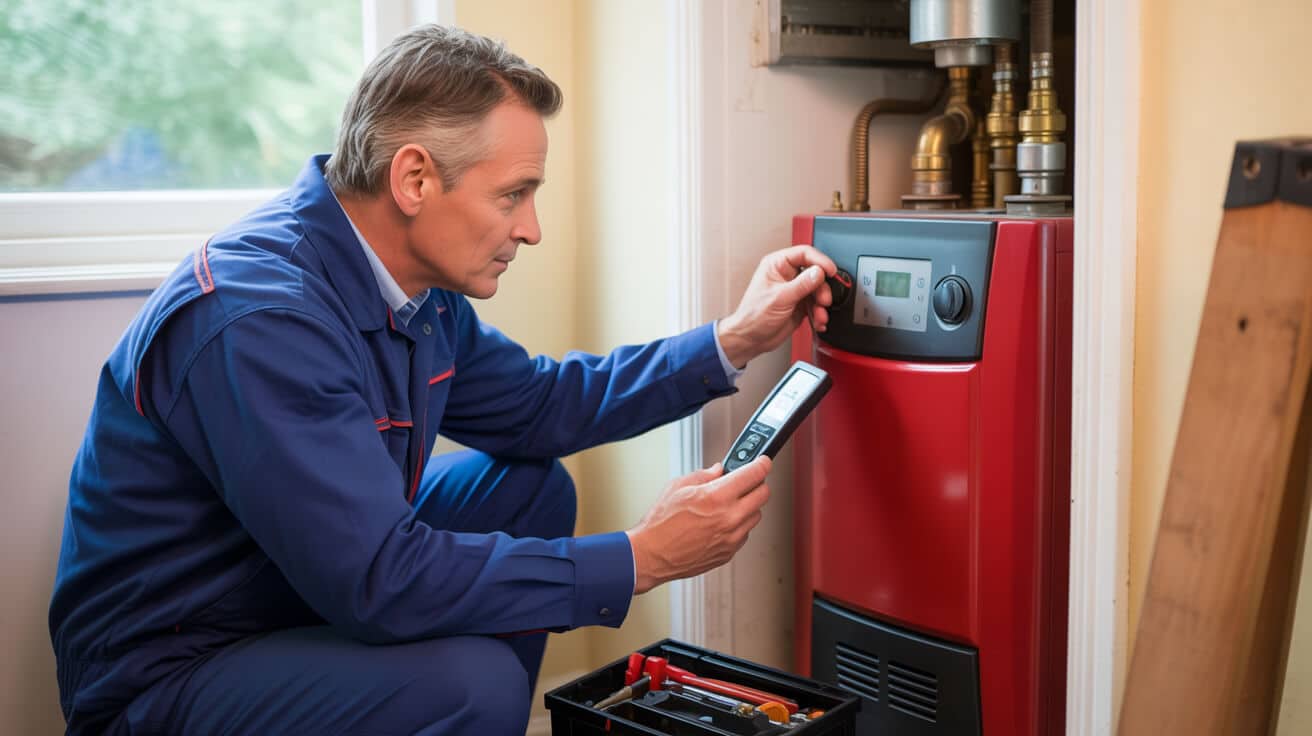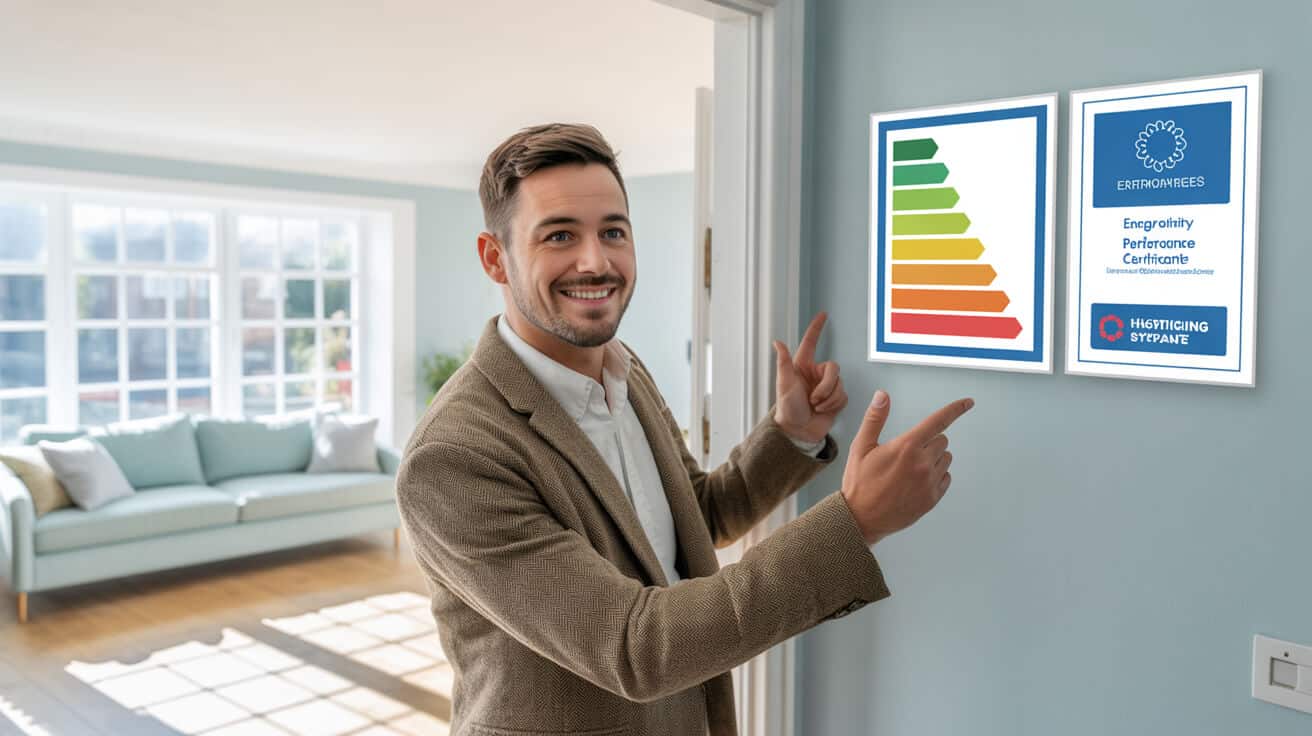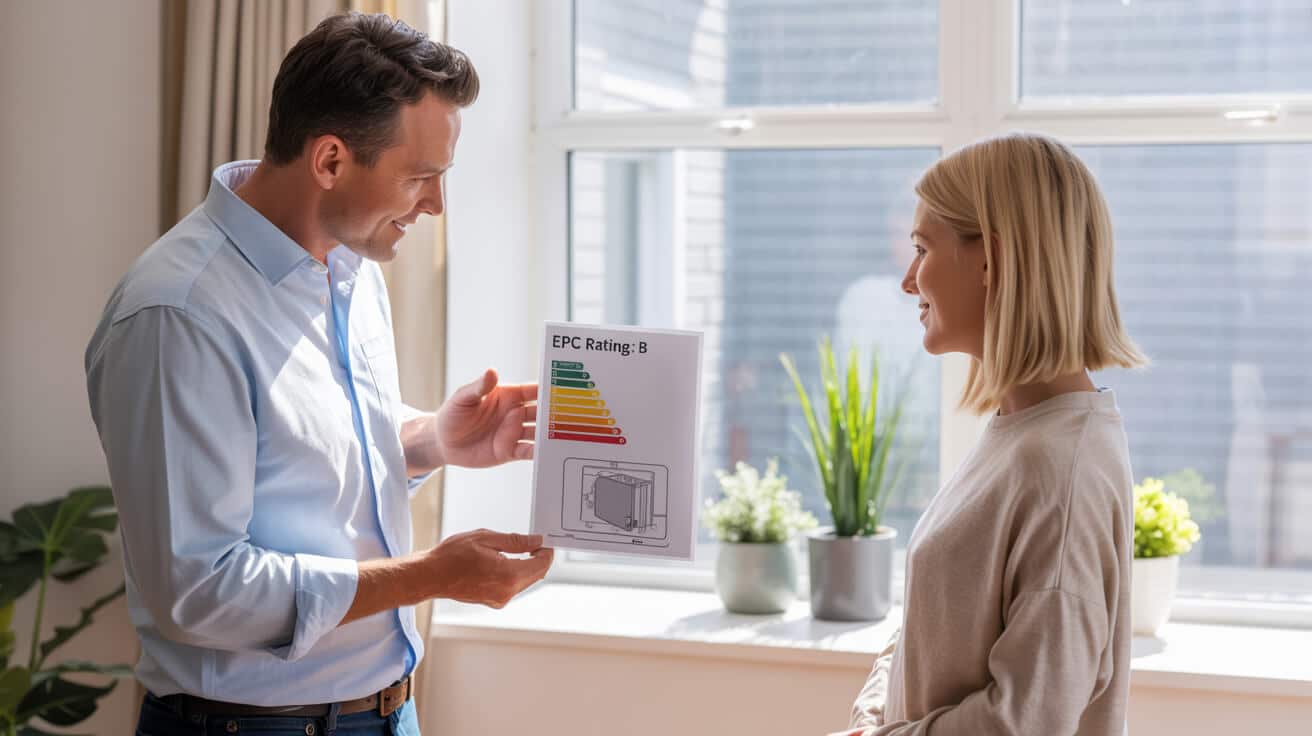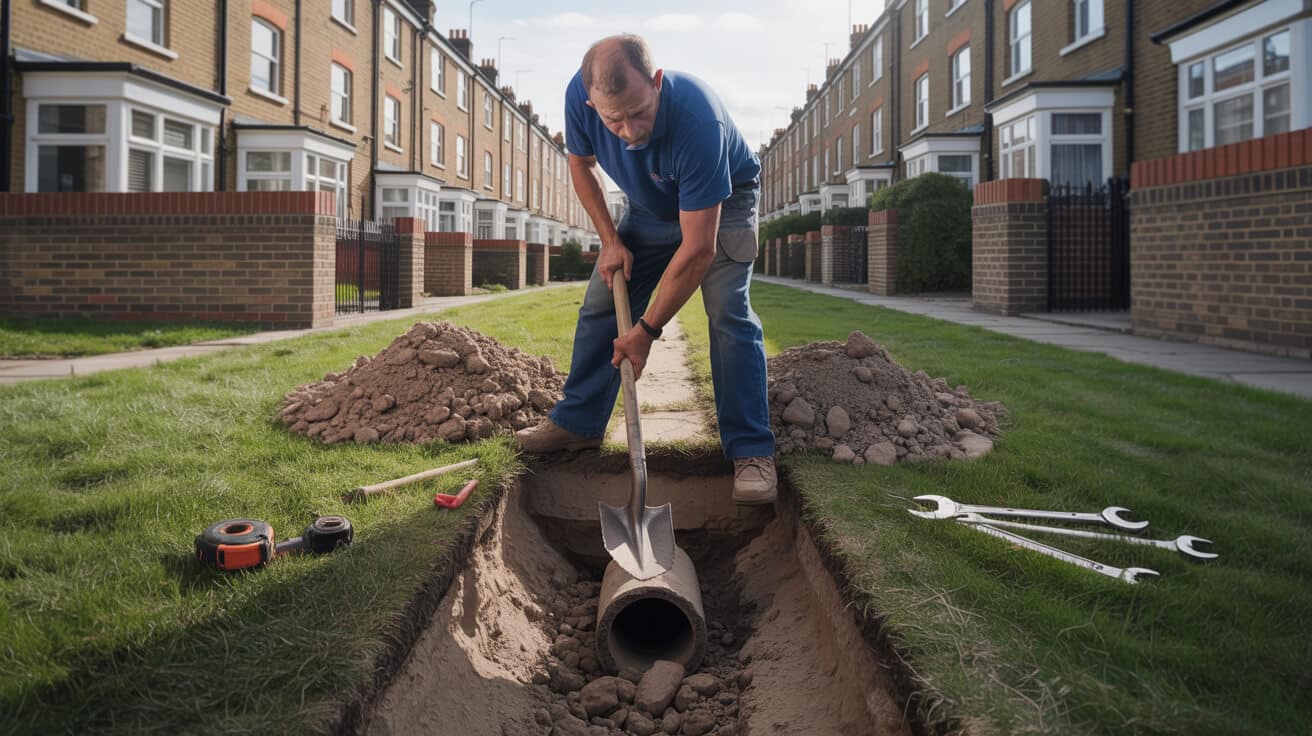 5 Ways to Boost Central Heating Efficiency in Your Home
5 Ways to Boost Central Heating Efficiency in Your Home

Where Are Most Homes Losing Central Heating Efficiency—and What’s Really Costing You?
Across the UK, the biggest hits to central heating efficiency rarely start with something dramatic. It’s not always a failed boiler, a gushing leak, or an energy bill that’s suddenly doubled overnight. For most homeowners and property managers, losses sneak in much quieter: a thermostat that drifts out of sync, a radiator that never quite clears the chill, pipes cooling in empty rooms, or one corner of the house that never seems to catch up no matter how high you set the heating. Over months and years, these small, cumulative flaws become the biggest reason household energy spending climbs—with zero extra comfort to show for it.
Your heating might feel fine week-to-week, but the hidden faults and imbalances stack up on your next bill.
Take a walk through a typical property: radiators may rattle or gurgle quietly in the background, certain rooms linger cold regardless of weather, and draughty corridors steal heat as soon as it’s delivered. A surprising percentage of homes—even fairly modern builds—contribute to wasted heating with overlooked maintenance: radiators that haven’t been bled in years, zones never balanced post-instal, and piecemeal insulation that leaves pipes sweating in lofts or garages. Landlords or block managers feel this pain twice: first through rising operating costs, then with tenant complaints or EPC/MEES compliance stress.
The Real Sources of Hidden Heating Waste
Ignoring “little” system issues, like a stuck valve or an ageing non-digital thermostat, adds up fast. Here’s what really creates long-term, money-wasting loss:
- Outdated or manual controls: – If your system relies on wall dials, manual timers, or inconsistent routines, it’s easy to overheat emptier spaces and let rooms run cold.
- Imbalanced circulation: – Radiators and pipework left unbalanced (often after repairs or DIY mods) create hot and cold spots, forcing your boiler to run for longer to achieve even, comfortable results.
- Neglected system health: – Sludge, air pockets, and failing inhibitors degrade flow, reduce total heat output, create noise, and halve the lifecycle of key components.
- Missing or poor insulation: – Exposed pipes, loft runs, and cold underfloor zones drain heat before it ever reaches the rooms that matter.
- Faulty or ignored valves: – From ageing thermostatic radiator valves (TRVs) to zone actuators stuck just slightly open, these silent weaknesses keep your system fighting itself.
The difference between “adequate” and “future-proofed” boils down to system-wide insight and regular, proactive checks—not just crossing your fingers and hoping your next bill proves you right.
What You’re Really Risking When Efficiency Slips
It’s not just about bills. Poor output and neglected heating habits mean less comfort, more maintenance, and the risk of voided warranties. According to the Energy Saving Trust, each degree lost to inefficiency can push fuel costs up by 10% or more per year (Energy Saving Trust, 2024). Lingering sludge and system imbalance don’t just hit your wallet—they can halve the lifespan of pumps and radiators. Landlords and managers face the added burden of compliance pressures: poor EPCs and MEES failures can mean fines or longer vacancy rates.
Quick System-Loss Snapshot
| Efficiency Leak | Impact | Who Feels It Most |
|---|---|---|
| Unbalanced radiators | Cold spots, extra run | All households |
| Neglected maintenance | Noise, short life | Landlords, agents |
| Outdated controls | High bills, discomfort | All property types |
| Draughts and poor lagging | Heat loss, slow warm | Older & new builds |
A system refresh isn’t just chasing comfort—it’s about protecting your investment, boosting market value, and creating documentation that keeps you in the clear with every regulator or tenant.
What Are the Fastest, Smartest Ways to Boost Central Heating Efficiency at Home?

Most properties don’t need a total overhaul or expensive, disruptive work to achieve real impact. In fact, some of the highest-yield upgrades take a single afternoon, a few small parts, or a short visit from a reputable engineer. Smart heating efficiency is about stacking smaller, system-wide optimisations—each one compounding your comfort, convenience, and savings year after year.
The best returns often hide in plain sight: adjust, insulate, automate, and document.
Five Proven Efficiency Wins
1. Smart and Programmable Thermostats
Old turn-dial or wall thermostats often misread actual temperatures and can’t adjust to family routines. A modern programmable stat (or app-driven “smart” model) enables precise scheduling, temperature setbacks, and even remote control. This simple switch can typically cut heating bills by 12% or more annually (Carbon Trust, 2024).
2. Bleeding and Professional Balancing Radiators
A cold top or uneven heat means air’s stuck in your system—or flow’s imbalanced. Bleeding is free and fast, but professional balancing (adjusting every valve in sequence) unlocks whole-house warmth. Overlooked after a new boiler or room conversion, balancing brings “outlier” rooms back into line.
3. Pipe Lagging and Draught Sealing
Every uninsulated pipe in a cold space (loft, garage, underfloor) leeches heat on its way to its destination. DIY lagging and even low-cost draught proofing (like window and door seals) compound every other upgrade you make. The Energy Saving Trust estimates lagging alone can pay back in under a year.
4. TRV Maintenance (and Use!)
Thermostatic radiator valves enable micro-zoning. Keeping them moving, not shutting any room entirely, and adjusting for each season means the system won’t “fight” itself, reducing excess fuel burn and cold spots.
5. Scheduled Professional Servicing
Even the best systems need a yearly reset. A certified engineer’s annual service clears sludge, checks for silent leaks, recalibrates controls, and keeps your warranty (and EPC record) airtight.
Efficiency Upgrades: Typical Costs & Savings
| Upgrade | Cost Range | Annual Savings | DIY/Engineer |
|---|---|---|---|
| Bleeding radiators | Free | Up to £50 | DIY |
| Pipe lagging | £10–£40 | £20–£35 | DIY |
| TRV maintenance | Free | £10–£40 | DIY/Eng |
| Smart thermostat | £70–£220 | £70–£120 | Eng/DIY |
| Balancing + Powerflush | £350–£550 | £80–£160 (3yrs avg) | Engineer |
Each layer of improvement not only adds comfort but enhances every zone and room—without months of work or major spend.
Upgrade Pitfalls (and How to Dodge Them)
- Turning radiators “off” instead of “down”: breeds flow and damping issues—set low, but never close fully.
- Assuming new builds are sorted: —builders often skip pipe lagging in unseen areas or misconfigure smart controls.
- Neglecting TRVs: —seasonal exercise and adjustment are as important as the instal.
Take stock now; you’re likely three small changes away from a warmer, leaner, and more compliant home.
Which Improvements Are Safe as DIY—and When Must You Involve a Qualified Engineer?

The instinct to “roll up your sleeves” is valuable—but understanding the boundary between what you can handle and what requires credentials means you’ll maximise safety, efficiency, and legal cover. Many high-impact efficiency tweaks are fully DIY-friendly, but others must be left to licenced tradespeople to preserve warranties and certification.
Quick wins for confidence—plus specialist input for safety and long-term system health.
DIY Efficiency Moves
Radiator Bleeding
Simple, effective, and cost-free. All you need is a radiator key and a towel to catch spills. Listen for the hiss, close when water appears. This clears air pockets for consistent warmth.
Pipe Lagging
Clip-on foam lagging fits over exposed copper or plastic—especially smart in lofts, garages, or basements. Minimal tools; maximum return.
Basic Thermostat Programming
Scheduling heating and “holiday modes” on programmable stats (most new models are user-friendly) prevents overrun and wasted energy.
Quick Draught Proofing
DIY window and door seals take moments and require no specialist skills.
TRV Checks
Gently move valves to prevent sticking, adjust for the seasons, and check nothing is stuck “off” in spare or hardly-used rooms.
When to Call in the Pros
- Stubborn cold spots or persistent system noises: after DIY fixes
- Loss of boiler pressure: , or visible leaks around the boiler/cylinder
- Any work on sealed or pressurised systems:
- Control, wiring, or gas modifications:
- Changes that impact EPC/MEES/legal documents:
- Complex balancing and all powerflushing:
Registered engineers don’t just bring tools—they bring know-how, compliance, and risk coverage. Every fix is logged with photographic evidence and certificates as required by law.
How Do Smart Controls and Room Zoning Multiply Heating Efficiency and Lower Bills?

If you want “set-and-forget” comfort, real-time data, and automation that adapts to your lifestyle (not the other way around), smart controls and zoning are the game changers. Modern central heating control is no longer about just on or off—now, your system can learn, predict, and micro-manage heat output for each space.
The more granular your control, the more energy and comfort you recover—almost on autopilot.
Next-Generation Control Upgrades
Programmable and App-Based Thermostats
Set heating schedules that track your week, use “geo-fencing” to cut heat as you leave home, and receive real-time system diagnostics. Many cover their cost in under 24 months.
Zoning & TRVs
Control groups of rooms or individual zones from a central point. Modern zoning valves and digital TRVs allow for granular, responsive control—particularly useful for multiple tenants or varied usage patterns.
Full-Home Integration
Ecosystems like Hive, Nest, Tado, and Evohome let users manage settings remotely, run reports, and adapt to daily habits. “Holiday Mode,” quick-boosts, and integration with renewables (heat pumps, solar) now come built-in.
Cost & Saving Comparison
| Upgrade Type | Approx Cost | Annual Saving | Typical Payback |
|---|---|---|---|
| Programmable stat | £70–£150 | £70–£120 | 1–2 years |
| Smart TRV | £40–£65 | £15–£35/ea | 2–3 years |
| Zoning valve | £150–£400 | £50–£125 | 2–4 years |
| Full system app | £100–£220 | £75–£135 | 1–2 years |
Landlords see added value in tenant comfort (less turnover), instant compliance logs, and enhanced EPC grades.
When Are Powerflushing and Professional Balancing Non-Negotiable?

Even “new” systems degrade as air, scale, or sludge builds up—or when layout changes introduce hidden imbalances. Despite regular bleeding or basic tweaks, performance still drops. That’s where serious system refreshes become mandatory—not optional.
You can’t fake a balanced or de-sludged system—your pump, boiler, and bank account will reveal the truth.
Signals for Immediate Action
- Room temp swings: — Some areas always cold, others too hot, even after regular maintenance.
- Radiators cold at the bottom or patchy heat: — Classic sign of sludge, not just trapped air.
- System never quite “catches up”: — Boiler runs for hours with little effect.
- Noisy system: — Banging, hissing, or constant pump noise signals internal friction.
- Dark or rusty water from rads: — True marker that a powerflush is overdue.
An engineer-led balance includes every valve and pipe. powerflushing, using specialised pumps and cleaning agents, clears years of build-up, restores flow, extends life, and resets your risk of costly pump or boiler failure. For compliance, a logged service record is your legal cushion.
So, Why Does Heating Efficiency Really Matter for EPCs, MEES and Legal Compliance?

What was once voluntary—being “green” or cost-aware—is now a core legal, market, and reputational requirement. Both Environmental Performance Certificates (EPCs) and Minimum Energy Efficiency Standards (MEES) are now enforceable benchmarks, not just helpful guides. Out-of-date heating can hit you with fines, void insurance, and drive down property value.
A high EPC isn’t a flex; it’s your price of entry for secure, valuable property.
Where Proper Heating Upgrades Protect You
- EPC jumps by up to 15 points possible: with professional balancing, modern controls, and evidence of ongoing servicing.
- MEES “E” minimum: — Failing systems or poor control instals can land a property below the threshold, invalidating leases.
- Documentation acts as audit-shield: — Owners/managers must show current service reports, upgrades, and certifications on demand.
What Smart Landlords and Owners Are Now Doing
- Upgrading to programmable/app-based stats and modern TRVs before letting or sale.
- Keeping a digital evidence folder: EPCs, work receipts, annual certificates.
- Choosing engineers and products with clear, compliant logs—Plumbers 4U engineers provide this every time.
Your path to legal confidence now depends on heating health as much as insulation or boiler age.
Which Costly “Old Wives’ Tales” Are Undermining Your Heating Efficiency and Finances?

Part of the challenge isn’t just technology or compliance—it’s shaking loose the habits and beliefs that “worked” decades ago but now quietly cost thousands. The best outcomes come from confronting comforting myths head on, then doubling down on proof-driven, modern fixes.
Real comfort starts when you drop folklore and invest in what’s proven to work—plus what’s easy to prove at audit.
Let Go of These Heating Myths
- “A new boiler is the universal fix.”: Even the best unit will underperform without fluid flow and upgraded controls. The Energy Saving Trust found *up to 30%* of potential gains are wasted this way.
- “Thermostat placement doesn’t matter.”: A stat stuck in a cold hallway or left behind a door turns scheduling into guesswork.
- “Constant low-level heating is cost-effective.”: Repeated studies confirm that well-timed, smart schedules beat “trickle” methods, especially in patch-use homes and multi-lets.
- “DIY always saves money.”: System errors, warranty risks, and errors with smart controls or zone tweaks can trigger far bigger bills.
Sensible DIY, alongside engineer-verified upgrades, unlocks savings and real property value.
How Do You Decide When Professional Help Is Mission-Critical—and What Does Safe DIY Look Like?

Everyone should understand and feel empowered to make visible, low-risk improvements: bleeding radiators, adding lagging, checking TRVs, explaining controls to tenants, or improving draught seals. Where things turn technical—adjusting pressurised systems, balancing after major works, or anything touching compliance and gas—is the very moment to let a pro take the reins.
DIY Territory: Where You Have Control
- Bleeding and testing visible radiators
- Lagging exposed pipes in accessible areas
- Replacing window and door seals
- Programming straightforward heating routines
Engineer Only: Non-Negotiable Jobs
- Balancing, flushing, or altering any sealed circuit
- Modifying or upgrading gas appliances
- Boiler, cylinder, or control wiring work
- Any remedy that impacts EPC/MEES/legal status
- Any changes that become part of warranty records
Plumbers 4U brings WaterSafe and WRAS credentials, transparent service contracts, and leave-behind evidence for your records or insurance. Our fully trained staff ensure every fix stands up in a compliance check—or an insurance audit.
If the job’s ending up in your logbook or EPC, don’t leave it to chance. Call a pro.
Secure Reliable Efficiency with Plumbers 4U—Comfort, Value, and Compliance in Every Visit
Property in the UK is more regulated, more competitive, and less forgiving of shortcuts than ever. The difference between homes and investments that lose value year after year—and those that pay back steadily—is the quality of their ongoing heating care, documentation, and adaptability to evolving standards.
Plumbers 4U offers WRAS-approved, WaterSafe-certified, nationwide plumbing and heating expertise—built for owners, managers, landlords, and agents who want more than a quick fix. Our team delivers smarter upgrades, hands-on system reviews, and paperwork that stands the test of an audit. Whether it’s a stuck radiator, a compliance certificate, or a major system overhaul, Plumbers 4U is the trusted name in rapid, reliable, and fully documented heating support.
Today’s efficiency is tomorrow’s reputation. Upgrade your comfort, future-proof your property, and enjoy total peace of mind—with Plumbers 4U at your side.
Reach out to Plumbers 4U to schedule your system review, compliance check, or simply to get honest, engineer-driven advice on your next heating move. Trusted by homeowners, landlords, and professionals alike, we turn every service into an investment in the comfort and value you deserve.
Frequently Asked Questions
What new technologies are redefining central heating efficiency for UK homes and businesses?
Emerging smart devices and integration protocols are giving property owners more precise control over heating efficiency, maintenance insight, and compliance readiness—often without invasive refits or disruptive works.
The latest innovation wave adds “learning thermostats” that adapt automatically to your usage pattern, even detecting occupancy through geofencing or AI-driven routines. These systems go beyond simple timers: they integrate weather forecasts, automate minor adjustments, and trigger energy-saving “eco modes” if windows are left open or movement sensors signal no one’s home. Remote diagnostics—now standard with several boiler brands—allow engineers to spot drop-offs in system performance before failures or compliance faults develop, minimising downtime for commercial clients or landlords managing multiple properties. UK building managers now frequently deploy “zone balancing” via smart TRVs on every radiator, achieving as much as 14% higher efficiency compared to houses running only one central stat (BEAMA, 2023). Connectivity with apps lets you visualise historic energy use, receive maintenance prompts, and schedule instant service calls—vital for passing EPC, MEES, and insurance checks with minimum admin friction.
How do “next-gen” controls outperform standard upgrades?
- Weather-compensating Boiler controls auto-adjust flow temperature to outside conditions, preserving comfort while *lowering running costs* by up to 12%.
- Multi-zone setups mean bedrooms aren’t heated pointlessly during the workday or late-night restaurant frontages don’t burn energy after closing.
- Diagnostic alerts catch emerging problems—pressure loss, uneven flow, actuator faults—before they can escalate to breakdowns.
- API-enabled panels can automatically log “maintenance events”, generating compliance records usable for audits or rental renewals.
As energy regulations tighten, integrating these interoperable controls remains one of the highest value, lowest disruption ways to win on both comfort and compliance. Every installation by Plumbers 4U uses certified devices, provides full user training, and delivers the paperwork and app setup to prove value now and safeguard your future.
Which compliance mistakes most often lead to failed EPC inspections or penalties in 2024?
The most common compliance failures don’t start with poor hardware—they stem from missing documentation, overlooked maintenance, or outmoded reporting of upgrades, especially as current EPC and MEES rules shift targets sharply upwards.
Recent EPC audits flag three consistent pitfalls: incomplete logs of upgrades (such as unrecorded pipe lagging or undocumented thermostat replacement), expired or lost engineer service certificates, and “work-arounds” (e.g., DIY balancing) that invalidate the intent behind compliance standards. New EPC methodology places substantial weight on proven measures—meaning verbal claims or invoices lacking full service codes rarely suffice (GOV.UK, 2023). Likewise, missed annual checks for unvented systems (G3 certificates), or negligence with philtre, inhibitor or system balancing logs, almost guarantees costly re-testing or forced remedial works. Rising numbers of letting agents and block managers now specify “compliance chain” paperwork—at every landlord handover—to avoid contract violations or surprise audit failures.
If you can’t produce paperwork, the system might as well be broken to the regulator—proof now drives both value and legality.
What’s required to guarantee compliance at inspection?
- Timestamped proof of all smart retrofit, lagging, powerflushes, or TRV instals (engineer or installer stamped).
- Valid G3, CP12, and Part L documentation (renewed on schedule, named to property).
- Up-to-date maintenance logs, including philtre flushes, inhibitor top-ups, and balancing results.
- User-friendly handover sheets—so new occupants understand controls, maintenance, and compliance checks.
Plumbers 4U delivers compliance packs tailored to the latest standards, cross-linking every visit to your official EPC or MEES file for hassle-free letting or sale.
How does system balancing differ from powerflushing—and when is each service needed?
System balancing distributes heat evenly by adjusting each radiator’s flow, while powerflushing removes damaging sludge and deposits—two separate but complementary processes for reclaiming system performance and comfort.
Balancing addresses scenarios such as cold spots in certain rooms or radiators slow to heat, usually after DIY pipework tweaks, new additions, or long-term unnoticed drift. Using specialist thermometers and valve keys, an engineer “tunes” the flow so every radiator heats as specified, often restoring room-to-room comfort overnight. By contrast, powerflushing is indicated when you encounter brown water, repeated radiator blockages, or boiler cycling issues. This active cleansing uses a high-flow pump and chemical solution to dislodge and flush debris from radiators and pipes, typically completed in half a day. Most UK homes benefit from balancing at least every five years, or after major works; powerflushing is best reserved for prior to new boiler instals or if significant sludge or performance drop-off is confirmed (CIPHE, 2024).
Symptoms and solutions at a glance
| Problem | Balance Needed | Powerflush Needed |
|---|---|---|
| Cold spots/uneven | Yes | Sometimes (if sludge) |
| Boiler cycling | Sometimes | Yes |
| Brown/rusty water | Rarely | Yes |
| Recent pipework change | Yes | No |
| Noise/air in system | Sometimes | Yes (if persists) |
Plumbers 4U systematically diagnoses before recommending either service. Every job is monitored for before-and-after improvement and produces the documentation to evidence the result—crucial for insurance, EPC progression, and warranty retention.
What role do government grants, incentives, and new rules play in heating upgrades and compliance?
In 2024, energy efficiency rules and grant schemes now directly shape your options—and potential payoff—when upgrading, retrofitting, or documenting heating improvements.
Homeowners, landlords, and commercial clients can now access the Boiler Upgrade Scheme (BUS), ECO4, or other region-specific incentives that may offset the cost of qualifying upgrades, from smart controls to modern condensing boilers or insulation works. Yet, grant compliance is document-driven: you must usually show both pre- and post-upgrade EPC or survey data, certified installer paperwork, and warranty alignment with current schemes. Landlords face further new compliance deadlines—MEES “B” or “C” by the end of the decade for some sectors—so choosing improvements that are pre-approved for these schemes keeps you ahead of legislative change. Block managers and councils, in particular, must maintain robust records for grant claims submitted on behalf of multiple properties.
It’s not just about reducing energy use—it’s about proving every pound invested delivers long-term compliance and enhances property value.
Which upgrades qualify for incentives?
- A-rated condensing boiler fitting (Part L compliant, installer-certified)
- Full property pipe lagging, with post-instal photographic records
- Smart thermostatic controls, app-based, and EPC-improving
- Powerflushing prior to system upgrade (evidence of before/after)
- Underfloor heating, air source heat pumps, and solar thermal panels via MCS-certified installers
- Ongoing maintenance contracts for compliance (philtre, inhibitor, annual system health check logs)
Plumbers 4U audits your upgrade path against current grants, maximising your eligibility and ensuring every improvement delivers both efficiency and paperwork.
What are warning signs or patterns that signal deeper or recurring central heating faults?
Certain recurring symptoms tell you that a one-time fix won’t resolve the root issue—pointing instead to wider underlying faults, needing expert tracing and full-system diagnostics.
Patterns to watch include: radiators that stay stubbornly cold regardless of bleeding or balancing, heating that cycles erratically, sudden and unexplained boiler pressure loss, wet patches below visible pipework, or “random” error codes on newer smart controls. Unaddressed, these often signal hidden leaks (sometimes slow and behind finishes), persistent air lock formation, or corrosion and scaling from hard water. Blockages or debris accumulation force the boiler to work harder—increasing bills and risk of outright breakdown or even home insurance claim rejection. Commercial tenants, letting agents, and block managers should pay special attention to co-occurrence of chilly rooms and unexplained energy usage spikes; this usually requires a full-system diagnostic including thermal imaging and pipework assessment, as it may involve concealed issues in shared risers or main feeds.
When the same warning returns twice, or a quick fix fails in weeks not years, you’re due for a holistic systems check.
What steps ensure lasting resolution?
- Commission leak detection, including thermal or acoustic tracing, for pressure drops or hidden stains.
- Deploy a full parameter check: flow and return temperatures, balance at each radiator, boiler cycling pattern, control setpoint accuracy.
- Audit control system setup—many faults are buried in digital profiles or “smart” device misprogramming.
- After any corrective work, schedule a return check to confirm stability.
Plumbers 4U engineers combine old-school pressure testing with the latest digital tracing, always documenting and explaining each step—so you’re confident your comfort and compliance issues really are solved, not just postponed.
How can business owners and landlords futureproof their properties against changing heating standards and tenant expectations?
The smartest portfolios now view heating upgrades and records not as one-off jobs but as strategic assets—directly protecting revenue, reputation, and regulatory headroom.
MEES and EPC targets are climbing, and tenant surveys show that thermal comfort and smart control access are now top-tier priorities for both residential and commercial lets. Properties with transparent compliance packs, regular balancing or flushing, and accessible control interfaces not only rent faster but avoid the financial pain of emergency upgrades required by sudden rule shifts. Documented works protect landlords against non-compliance claims, disputes over deposit retentions, or insurance gaps when systems are found to be undocumented or dangerously out-of-date. Commercial blocks and multi-let residentials are increasingly adopting annual “reviews” where heating, insulation, and controls are all inspected, resulting in real-time improvement recommendations that become a tracked asset within the letting or CRM platform.
In this new compliance era, paper-trail comfort is almost as valuable as thermal comfort—futureproof portfolios command market and regulatory respect.
Practical moves to stay ahead
- Pre-plan upgrades with both technical and document output in mind—choose only proven, future-compliant devices.
- Schedule annual audits, balancing, and flushing—each with a logged record and user-facing summary.
- Hold a digital compliance folder with scanned certificates, service logs, and before/after photos, ready for EPC or audit checks within hours.
- Ensure tenants have app-based control and clear handover instructions, adding to rental value and satisfaction.
For every audit, system upgrade, or compliance question, Plumbers 4U delivers not just hands-on expertise but the leadership, records, and advice required to set your properties apart and raise asset value in the era of rapid regulatory change.
Clarity doesn’t end with fixing pipes—secure your heating comfort, property value, and compliance with the team who makes the paper trail as strong as the system. Choose Plumbers 4U for confidence that goes beyond the quick fix.



